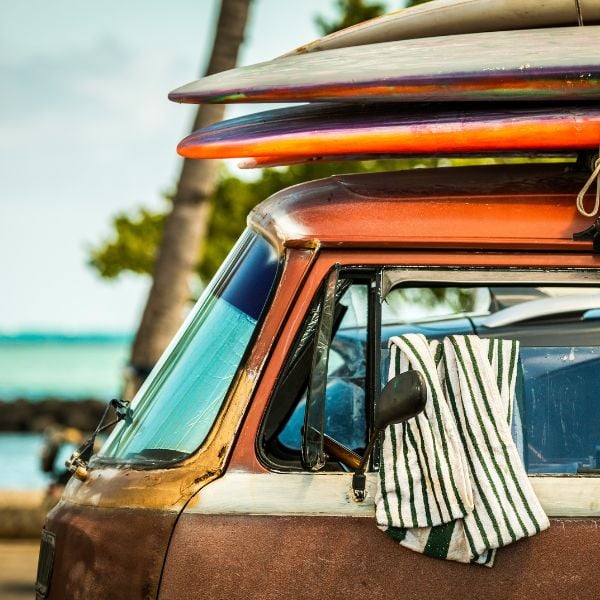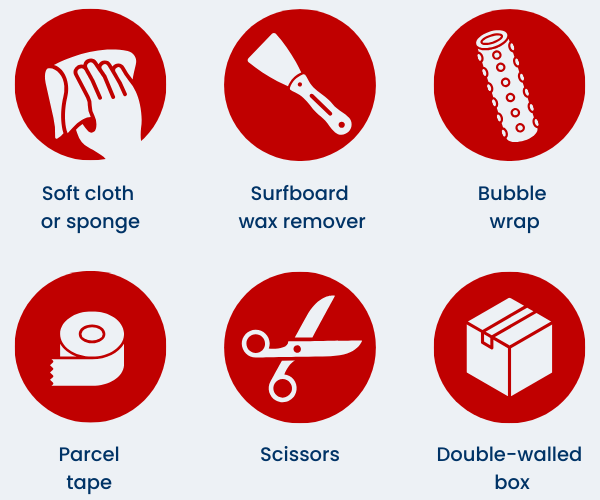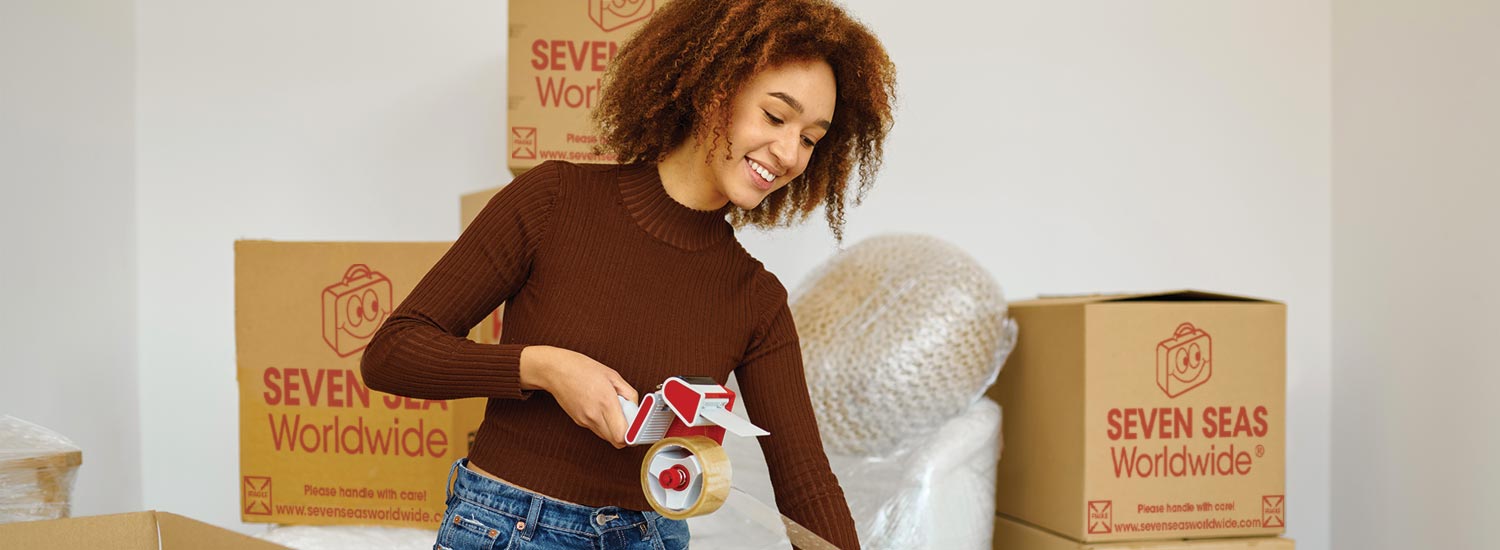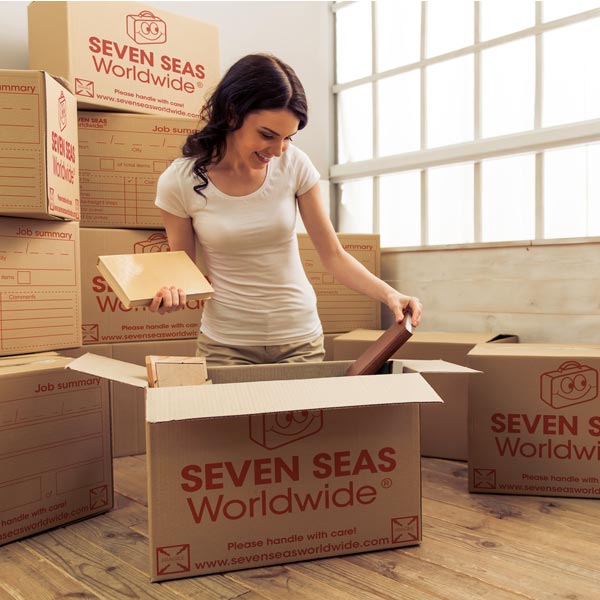Before packing, check this list of items prohibited from entering a particular country or region.
Key takeaways
- To ship a surfboard, choose a reliable shipping company, weigh and measure your fully packed board to avoid excess fees, print and attach the shipping labels, and complete all required customs documents.
- To pack a surfboard, dewax your board and clean and dry it using a soft cloth, then cover it in plenty of bubble wrap and place it in a padded surfboard bag, before packing it into a sturdy cardboard box and filling any gaps with packing peanuts.
- To ship a longboard surfboard, wrap it in lots of cushioning materials (paying special attention to the extended nose and tail), place it into a cardboard shipping box made to the board's dimensions, then ship with a trusted company experienced in handling oversized items.

How to ship a surfboard
To ship a surfboard, clean and dry it to prevent customs issues and keep it in top condition on arrival. Wrap it in protective layers and place it inside a sturdy shipping box, adding a "Fragile" label to reduce the risk of damage during transit. Choose a reliable shipping company that offers tracking, customs clearance, insurance options and door-to-door delivery. Before placing a booking, weigh and measure your fully packaged board to avoid excess fees. Finally, print and attach the shipping labels, which include your contact details and your origin and destination addresses, and complete all required customs documents.
Types of surfboard shipping box
The most common type of surfboard shipping box is made from cardboard, as it is lightweight, customisable, cost-effective, and recyclable. It can accommodate protective materials placed around the surfboard, like foam padding or bubble wrap, to absorb shocks and prevent damage from impacts during handling and transit.
Cardboard surfboard boxes come in various sizes, which you can cut or fold to suit multiple board shapes and lengths. Most include reinforced edges and double-wall construction to improve durability without adding too much extra weight. They are widely available from everyday packaging suppliers, surfboard manufacturers, and international shipping companies.
Top tip: ask your local surf shop if they have any spare boxes. They may offer you a discount or even give them away for free!
Surfers sometimes use wooden crates* for long-distance or overseas shipping when extra precaution is needed, as they offer superior protection against impacts and crushing. However, due to their higher cost and weight, they are usually reserved for expensive, rare, or particularly fragile boards.
*Seven Seas Worldwide does not endorse these products.

How to pack a surfboard
To pack a surfboard, first ensure that it is completely clean and dry. There's no better feeling than arriving at a paradise surfing spot with your favourite board in good-to-go condition. Moreover, several countries, including the US and Australia, have strict import laws regarding organic matter, and a well-maintained board will help avoid delays and fines.
Use a soft cloth or sponge with fresh water to remove sand, salt, and dirt. Avoid strong detergents that can strip away the surfboard's protective layers. If your board feels particularly grimy, use a mild, non-abrasive soap* and rinse thoroughly with fresh water until completely dry.
Consider dewaxing your surfboard before packing to avoid attracting dirt and dust on the board and packing materials. Then, add a layer of protection, such as a thin foam sheet or cardboard.
Next, wrap the board in plenty of bubble wrap* or a thick towel to protect it from scratches and minor bumps, adding extra padding to the vulnerable nose and tail. Then, place it inside a padded surfboard bag*.
If shipping without a padded bag, cover your board in foam padding or cardboard inserts, secured with tape. Then, place your wrapped surfboard inside a sturdy cardboard shipping box* that fits the board and has extra space for cushioning materials. Fill gaps with foam or packing peanuts to prevent movement during transit, then seal well with three layers of overlapping parcel tape.
Finally, clearly label your bag or box with "Fragile" and "Handle with care" stickers to ensure your surfboard arrives safely.
Below is a list of items you'll need to pack your surfboard securely:

*Seven Seas Worldwide does not endorse these products.
How to ship a longboard surfboard
Shipping a longboard surfboard requires extra attention due to its increased size and fragility. Unlike standard boards, longboards need a bigger, stronger shipping box* and additional protective padding to protect the extended nose and tail, which are more prone to transit damage. As a result, shipping costs may be higher. So, accurately measure and weigh the fully packaged longboard and choose a carrier experienced in handling oversized items to prevent unexpected fees.
*Seven Seas Worldwide does not endorse these products.











